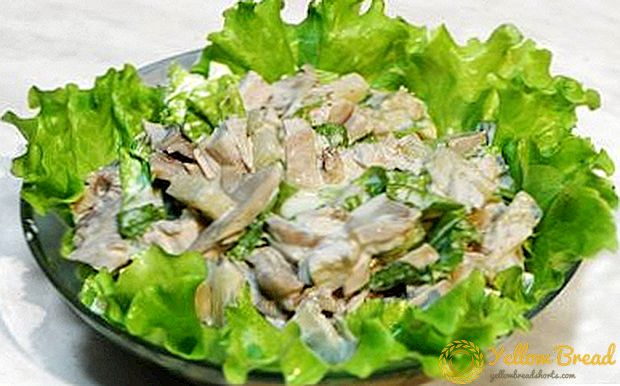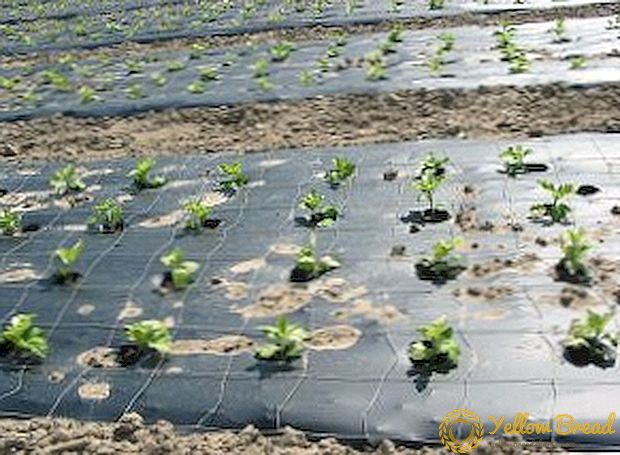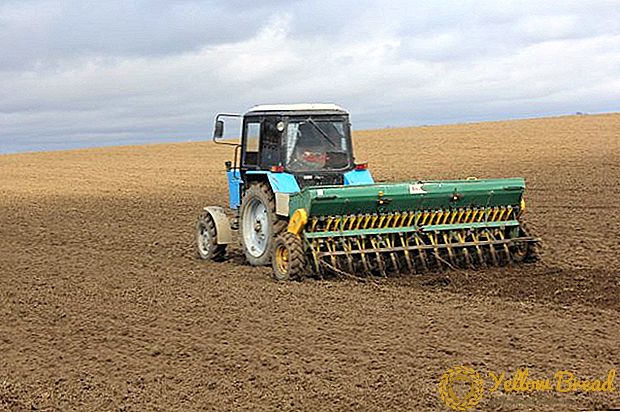 To date, there are thousands of tomato varieties. And annually their ranks are replenished with new representatives. Many tomatoes look like other vegetables, fruits and berries. Pepper tomatoes resemble pepper. These varieties are popular among gardeners because of their high yields, and their hostesses are valued for their excellent taste.
To date, there are thousands of tomato varieties. And annually their ranks are replenished with new representatives. Many tomatoes look like other vegetables, fruits and berries. Pepper tomatoes resemble pepper. These varieties are popular among gardeners because of their high yields, and their hostesses are valued for their excellent taste.
- Appearance and description of the variety
- Characteristics of the fruit
- The advantages and disadvantages of the variety
- Features of growing
- Maximum fructification conditions
- Harvesting
- Use of fruits
Appearance and description of the variety
There are a lot of pepper varieties of tomatoes. Tomato "Pepper-like giant" is one of them, and the description of this variety has several features:
- it is intended for cultivation in greenhouses, and grows in the southern areas in an open ground;
- indeterminant: in greenhouse conditions with proper care can grow and bear fruit more than one year;
- tall: the height of the bush - 1.5-2 m, needs a garter. Branches with large leaves of dark green color;
- mid-season: begins to bear fruit in 100-120 days;
- productivity: 6-9 kg from 1 sq. m with good care.

Characteristics of the fruit
Pepper giant tomatoes are easy to learn:
- the form is pepper-shaped, strongly extended (to 15 cm);
- berries are large, weighing 150-250 g;
- the color of the ripe fruit is uniformly red, the surface is smooth;
- the pulp is dense, fleshy, there is little seed;
- taste is pleasant, sweet: contains more sugars than other tomatoes;
- easy to transport due to the thick peel.
The advantages and disadvantages of the variety
Benefits
- suitability for cultivation in protected and open ground;
- high yield;
- good transportability;
- beautiful presentation of fruits;
- good taste;
- universality of use.
 Lack of variety: There are no pronounced deficiencies in this variety, and there is no information about the diseases and pests to which Perceous Giant tomatoes are prone or, on the contrary, they can resist. From the practice of some gardeners it is only knownthat their fruits are affected vertex rot, the cause of which is the lack of watering and the absence or excess of minerals, or rather calcium. Protecting plants from this disease can, if properly care for them: water regularly and properly fed.
Lack of variety: There are no pronounced deficiencies in this variety, and there is no information about the diseases and pests to which Perceous Giant tomatoes are prone or, on the contrary, they can resist. From the practice of some gardeners it is only knownthat their fruits are affected vertex rot, the cause of which is the lack of watering and the absence or excess of minerals, or rather calcium. Protecting plants from this disease can, if properly care for them: water regularly and properly fed.Features of growing
- Seeds need to sow in March, 60-65 days before landing in the ground. A seed box covered with film is placed in a warm place. When sprouts appear, it is opened and placed on the windowsill on the sunny side.
- Seedlings diving into cups after the appearance of 1-2 true leaves. It is desirable a week before transplanting hardening shoots every day.
- Landing in protected ground is carried out in May, when there are 5-7 leaves and 1 flower brush in the seedlings, and in open ground - in June. Plants need to plant according to the scheme 60h50 cm and no more than 4 pieces per 1 square. m
- Care simple. From the very beginning, bushes should be formed into 2-3 stepsons, the rest of the shoots should be eliminated. The more stems a plant has, the less yield it will give. Bushes grow high, so they need to tie up.To strengthen the root system and become powerful, we need weeding and hilling bushes. And for the bushes to develop normally, two or three times a day feeding with complex mineral fertilizers is necessary.
- Watering It is carried out 2-3 times a week in the evening with heated distilled water. When the earth dries out, it needs to be loosened.

Maximum fructification conditions
On the bags of seeds, the manufacturer points out: 5-9 fruits are fastened on one hand, each weighs up to 250 g. But, judging by the opinions of gardeners, there are other results in practice. Often the reason lies not in the poor quality of the seeds, but in another. All varieties of tomatoes need nutrients, especially during the formation and ripening of fruits. If they are missing, reduced productivity of the bushes. And correctly feeding tomatoes "Pepper-like giant", it is possible to stimulate fruiting and increase yields. It is recommended to feed the tomatoes in 3 stages:
- 10-15 days after planting in the ground to help the plants adapt and grow the root system. During this period, the bushes especially need nitrogen and phosphorus.It is recommended to apply liquid organic fertilizers (solutions of manure, chicken manure or herbal infusion), you can add mineral fertilizers.
- Before or during flowering: this will encourage more berries to form. Now tomatoes need potassium and phosphorus, but you need to minimize the amount of nitrogen. You can use the superphosphate (1.5 months before harvesting). Harmful folk remedies are effective during this period: yeast top dressing (10 g of dry yeast and 2 spoons of sugar for 10 liters of water, insist on the sun for 2-3 hours, dilute with water 1:10 and water), milk supplements (4 liters of water, 1 l milk and 15 drops of iodine, spray), boric acid (5 g / 10 l of water, spray plants). But there are ready-made preparations that contribute to fruit set: "Ovary", "Bud", "Ideal", "Senor Tomato", "Appin".
- During the fruiting period, to improve the taste of tomatoes and increase yield. Mineral fertilizers (superphosphate or nitrophoska with sodium humate) and organic (solutions based on ash, iodine, boron, manganese) are suitable.

Harvesting
Harvest in greenhouses can be in the middle of July, and in the open field - a little later. Like in other indeterminate varieties, in the “Pertitual Giant” fruiting stretches before the onset of autumn frosts. During this time from 1 km. m can collect up to 9 kg of berries, if the care was proper.
Use of fruits
Tomatoes "Pertvidny Giant" have a pleasant sweet taste with a slight sourness, therefore, they are happy to eat it fresh and are used to make fresh salads. Dense, fleshy fruit pulp and a small number of seeds make them suitable for stuffing, roasting, pickling, salting, canning (as a whole, and ground form). Mature berries contain a lot of sugars, so they make baby food, juices and mashed potatoes. “The pepper-giant” is one of the wonderful tomato varieties, competent cultivation of which will surely bring good results.






